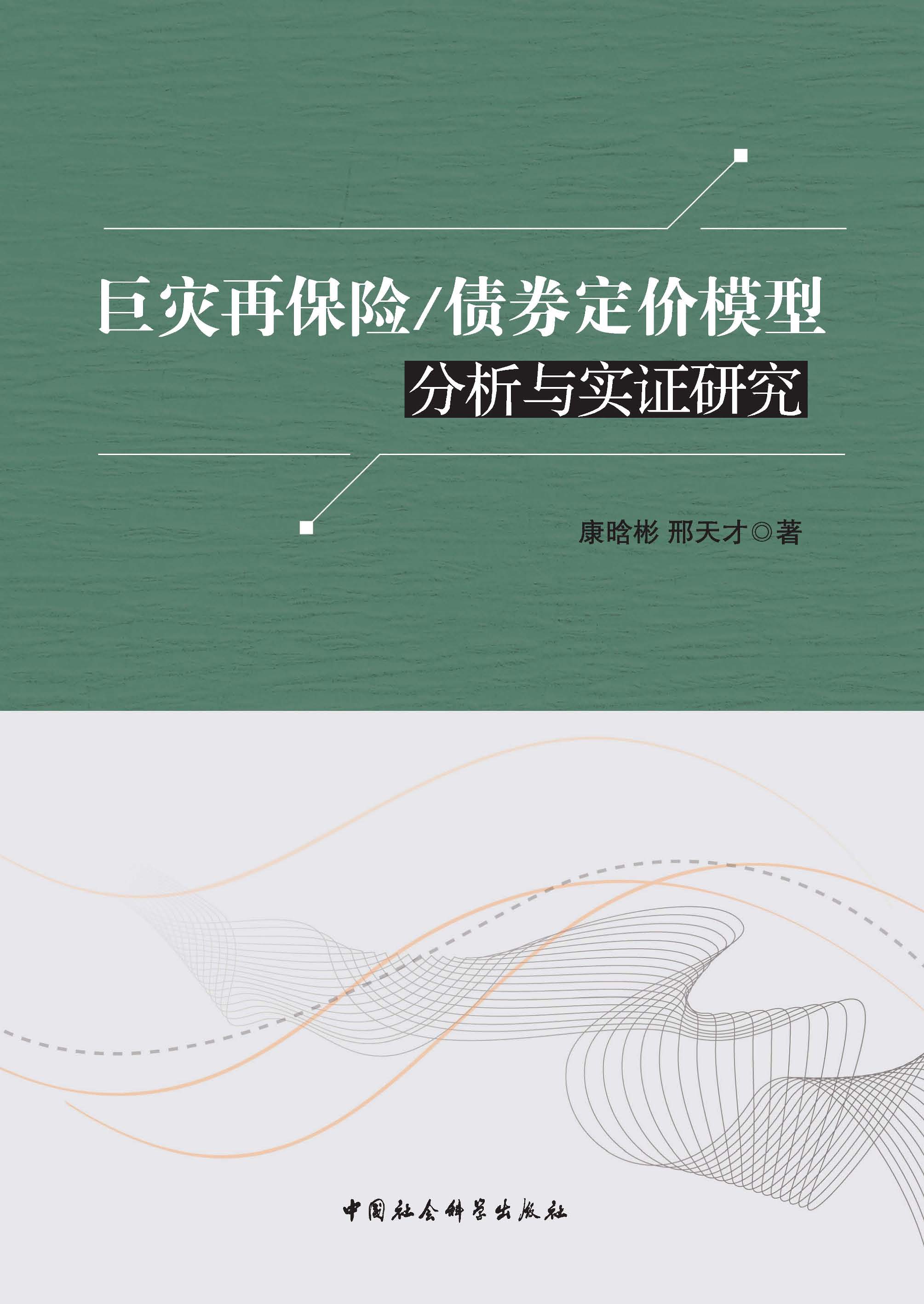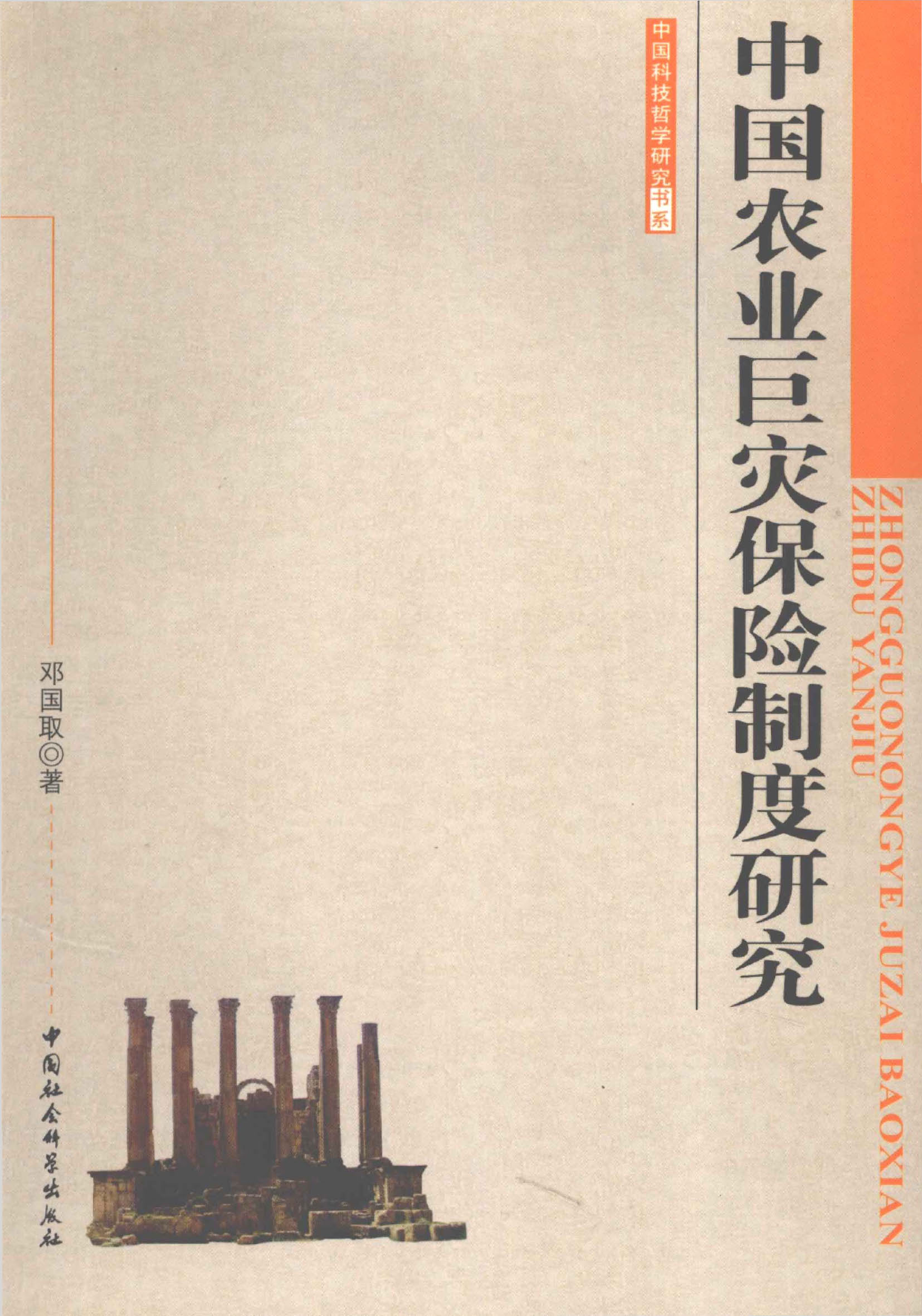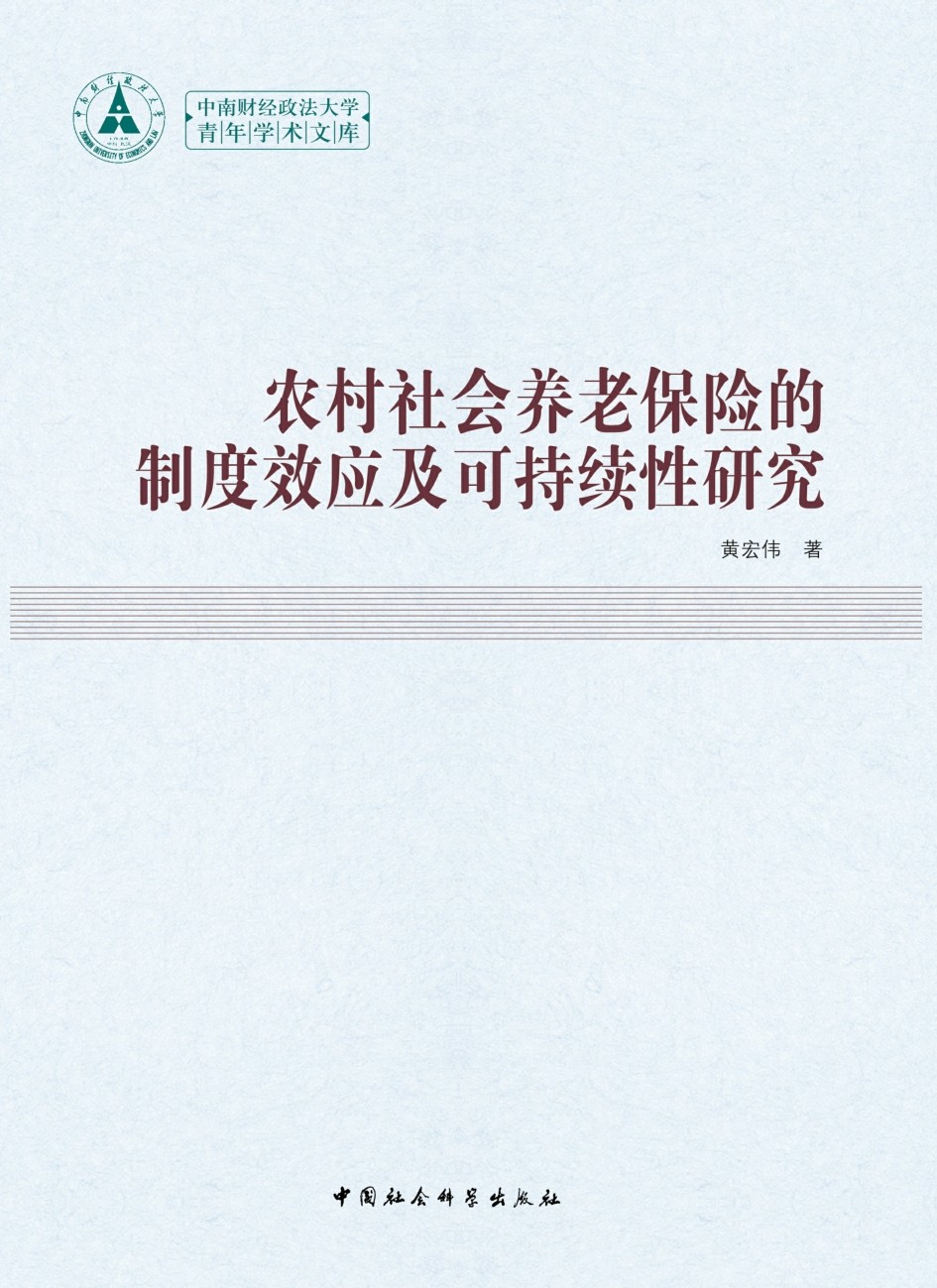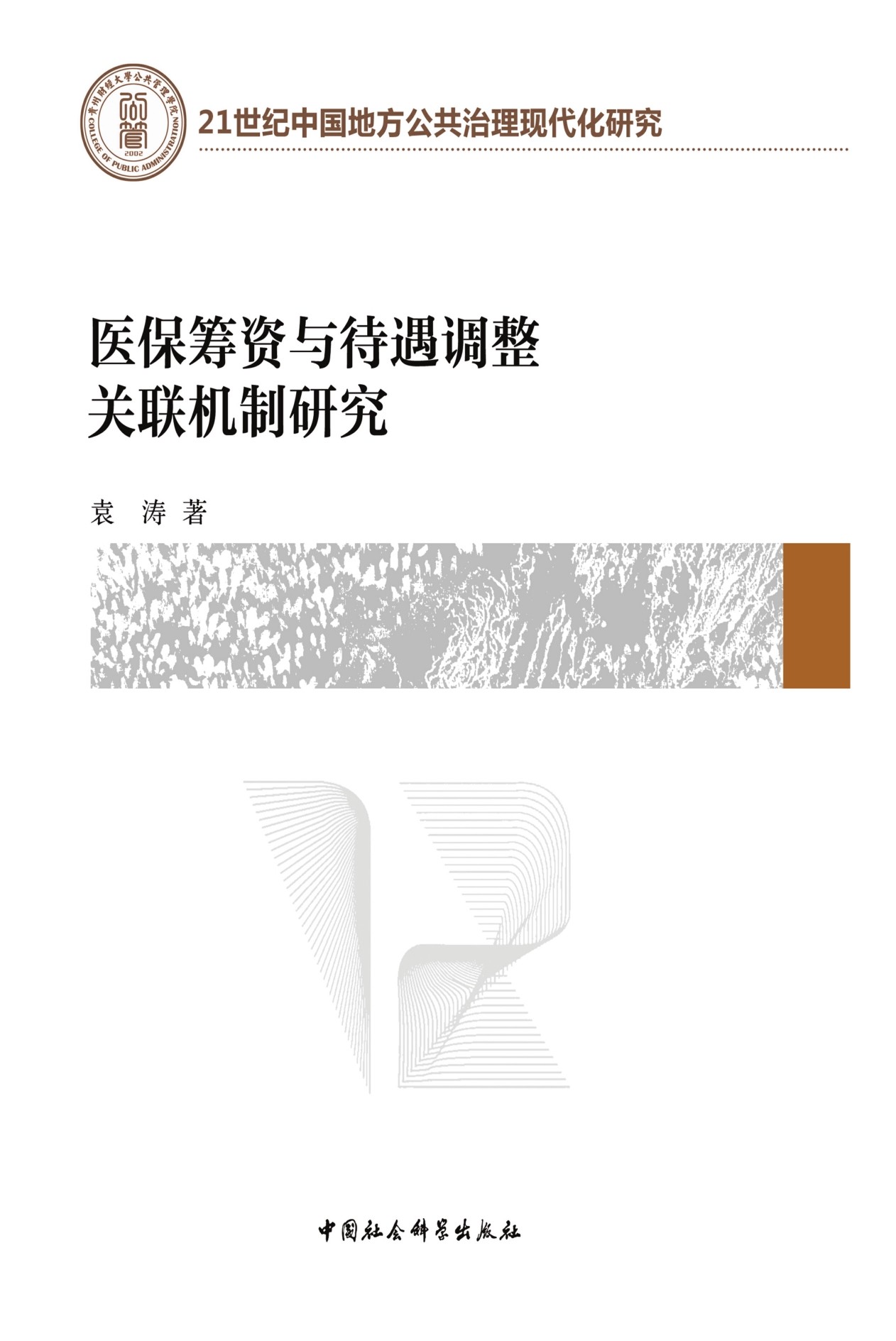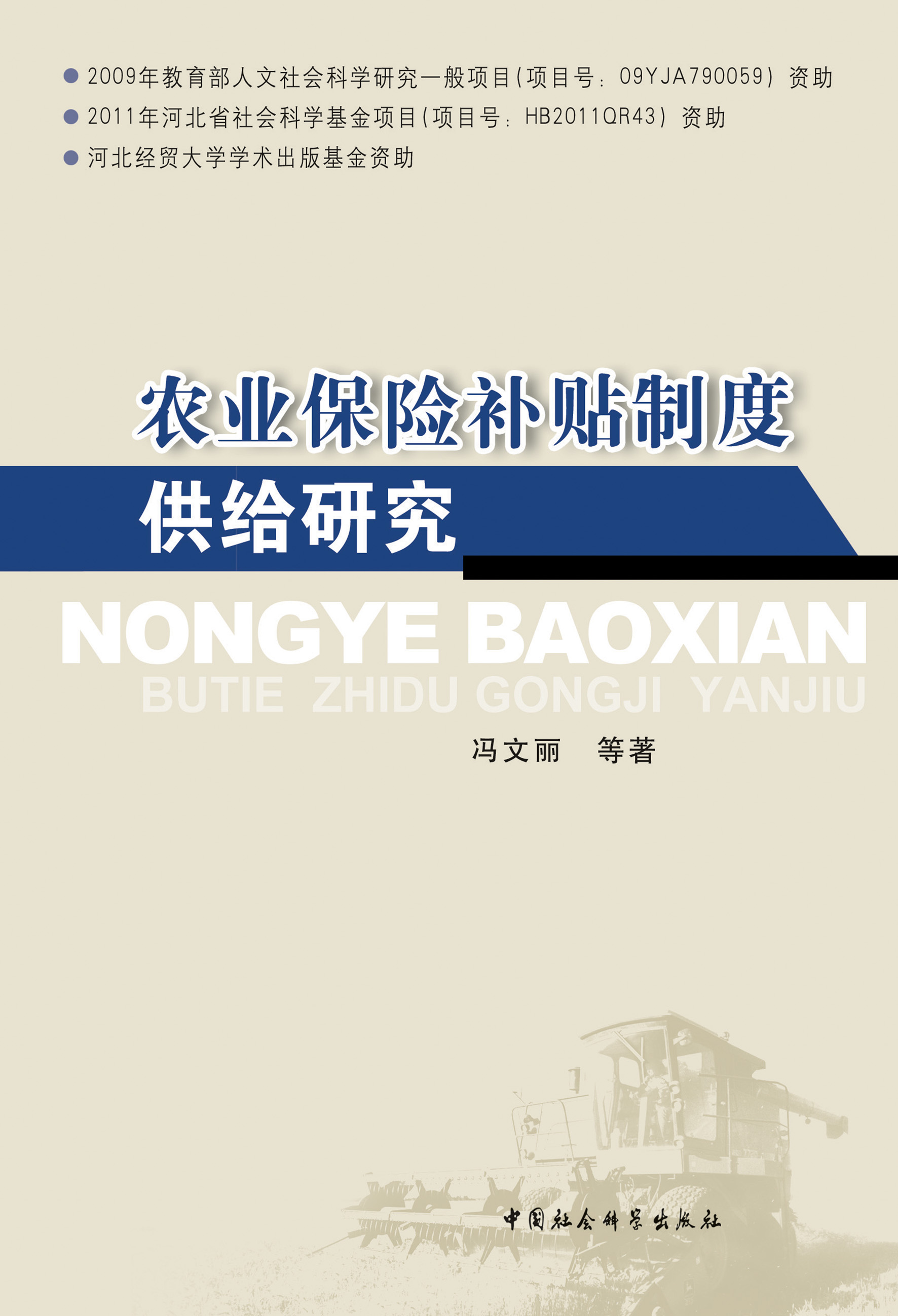内容简介
作者简介
目录
China’s terrain is vast and complex,the west leaning on the world’s highest Qinghai-Tibet Plateau,the east on the world’s vastest Pacific Ocean.A majority of the territory is on the two natural hazards belt of the world:the Pacific-Rim region and the Northern Hemisphere mid-latitude region.China is one of countries influenced by the most serious catastrophe in the world,having much higher annual frequency of drought,flood,typhoon,freezing and other natural disasters than the world average.And,a significant part of an annual GDP increment was engulfed by the disasters loss.For a long time,the diversification mechanism of catastrophe risk in China is mainly supported by the state financial investment and only limited in guaranteeing the basic livelihood of the people in the disaster-stricken areas.Therefore,it is urgently necessary for the Chinese government to utilize innovative financial instruments to redistribute disaster risk in a comprehensive innovation system,with the aim to ease the financial burden to a certain extent and to help the victims recover from the catastrophe as soon as possible.Diversification mechanism of catastrophe risk has attracted much attention in many developed countries.Since the early 1990s,the developed countries has innovated financial tools to deal with catastrophe risk,and the hotspots are focused on two aspects:catastrophe reinsurances and catastrophe bonds.However,in the case of catastrophe events,reinsurance might not have sufficient capital to cover the loss.For example,a single earthquake could significantly threaten the credit risk of many reinsrurers.Recently,asset and liability management(ALM)has become widely understood as the core activity for reinsurance companie.Historically,insurance companies in China rarely take management strategy to support ALM activities.Therefore,it is of importance of this dissertation to study catastrophe risk diversification mechanism based on the catastrophe loss in China under the perspective of asset and liability management.This dissertation aims to study the catastrophe reinsurance pricing and catrastrophe bonds pricing based on the catrastrophe loss in China,as well to propose policy suggestions on the implementation of catastrophe reinsurance/bond in China.For this purpose,this dissertation is organized as follows.Firstly,the concepts of catastrophe risk and the diversification mechanism of catastrophe risk are introduced,theories and models related to catastrophe reinsurance/bond pricing are systematically described.Secondly,based on asset and liability management,catastrophe reinsurance pricing has been model and studied by Monte Carlo simulation.The parameter sensitivity on the rate on line(ROL)of reinsurance was further investigated according to the earthquake/flood loss in China.Then,based on the asset and liability management and interest rate model,the catastrophe bond pricing was valued according to the earthquake/flood loss in China.Finally,according to the numerical results,policy suggestions are proposed on the issuing system of catastrophe reinsurance/bond in China.According to the theoretical analysis and numerical simulation,conclusions of this dissertation are as following:Firstly Based on the asset and liability management and loss distribution of flood/earthquake in China,the catastrophe reinsurance pricing was investigated.And,the ROL of catastrophe reinsurance are evaluated by Monte Carlo simulation with consideration of no default risk and of issuing catastrophe bonds,especially.Besides,the effects of asset/liability ratio,deductible,debet structure on the catastrophe reinsurance rates are also taken into account.Simulation results show that:(1)Issuing catastrophe bonds is beneficial in improving catastrophe reinsurance rates,as well as in reducing the default risk;(2)Asset/liability ratio,deductible,debet structure,triggering level have great effects on the ROL;(3)Due to the difference of earthquake loss distribution and flood loss distribution in China,the earthquake reinsurance solvency is required to be ¥100 billion and flood reinsurance solvency scale to be ¥10,000 billion.Secondly Based on the asset and liability management and earthquake/flood loss in China,the catastrophe bonds price is evaluated by Monte Carlo simulation with consideration of multiple risks,including default risk,moral risk and basis risk.Besides,the effects of catastrophe frequency parameter,loss variance and trigger level on the catastrophe bonds pricing are also taken into account.Simulation results indicate that:(1)The catastrophe bonds price increased with the increase of trigger level K,and catastrophe occurred frequency parameter r,catastrophe loss variance σi have great effects on the catastrophe bonds price;(2)Default risk,moral risk,and basis risk are the important factors that affect catastrophe bond prices and have cumulative effects on the reduce of catastrophe bond prices;(3)Effective asset liability management can disperse the multiple risks above and improve the catastrophe bond prices.Thirdly Based on the simulation results of catastrophe reinsurance pricing and catastrophe bonds pricing,policy suggestions were put forward on the issuing system of catastrophe insurance/bonds in China.It is suggested that:(1)The diversification mechanism of catastrophe risk in China should be a comprehensive innovation system leaded by government and jointed by insurance/reinsurance companies,etc.;(2)Based on the asset liability management,insurance/reinsurance companies are required to set up risk awareness system in the issuing of catastrophe bonds/reinsurance;(3)Due to the great difference of the catastrophe loss of earthquake and flood in China,the catrophe reinsurance/bonds of earthquake can be firstly issued in China.For the catrophe reinsurance/bonds of flood in China,it is suggest to be implemented in one province of China.The main innovations of this dissertation are as following:(1)Interest rate elasticity definitions on assets and liabilities,ØAand ØL,were introduced in the catastrophe reinsurance/bond pricing model,which extend the applicability of the catastrophe reinsurance/bond pricing model.(2)Based on the earthquake/flood loss in China,the catastrophe reinsurance/bond pricing in China has been investigated,providing a theoretical guidance and reference for the implementation of catastrophe reinsurance/bond in China.(3)From the perspective of asset liability management,the multiple risk factors on catastrophe bond pricing have been studied.The simulation results show that high asset-liability ratio is of importance in improving the bond prices,as well in decentralizing interest rate risk,default risk,et al.(4)Based on the simulation results of catastrophe reinsurance pricing and catastrophe bonds pricing,policy suggestions were put forward on the issuing system of catastrophe insurance/bonds in China.To sum up,this dissertation provides theoretical analysis and practical guidance for the implementation of catastrophe reinsurances/bonds in China.In theory,it enriches the domestic research in this field.In practice,it provides the reference on catastrophe reinsurances/bonds pricing,as well on the implantation of catastrophe reinsurances/bonds in China.Key Words:Catastrophe reinsurance pricing;Catastrophe bond pricing;Asset liability management;Monte Carlo simulation
全部显示∨
邢天才,东北财经大学金融学院院长、博士生导师。1996年3月至1998年7月任东北财经大学研究生部副主任;1998年9月至1999年9月任东北财经大学高教研究室主任;1999年9月至2006年11月任东北财经大学职业技术学院院长;2006年12月至今任东北财经大学金融学院院长。主要研究方向:金融市场、中外资本市场比较、证券投资。先后发表和出版了100多项(篇)科研成果。出版专著10余部,编著、主编教材16部,承担国家、省部级课题15项,在《光明日报》等发表论文50多篇,并有多项科研成果获得奖励。
全部显示∨
第一章 导论第一节 选题背景与问题的提出
第二节 文献综述一 巨灾风险分散机制研究综述
二 巨灾保险研究综述
三 巨灾风险证券化研究综述
四 资产负债管理研究综述
第三节 研究目标、内容与方法一 研究目标
二 研究内容
三 研究方法
第四节 研究框架设计与创新不足之处一 框架设计
二 创新与不足之处
第二章 巨灾保险、再保险定价理论模型与数值模拟方法第一节 构成巨灾保险定价模型的基本因素一 巨灾保险初始资本金及积累途径
二 巨灾保险计数过程的刻画
三 巨灾保险的赔付额与分布
四 巨灾保险的安排途径
第二节 巨灾保险、再保险定价理论研究一 国外巨灾保险、再保险定价理论研究
二 国内巨灾保险、再保险定价理论研究
第三节 基于资产负债管理的巨灾再保险定价模型一 巨灾再保险发行人的资产、负债动态模型
二 巨灾累计损失动态模型
三 巨灾再保险定价估值模型
第四节 基于蒙特卡罗模拟的巨灾再保险定价参数含义与计算步骤一 参数定义赋值
二 数值模拟方法计算步骤
第五节 本章小结
第三章 基于资产负债管理的洪水再保险定价实证研究第一节 不发行洪水债券的洪水再保险定价
第二节 发行洪水债券的洪水再保险定价一 触发机制对洪水再保险定价的影响
二 基差风险对洪水再保险定价的影响
第三节 洪水再保险合同中免赔额的影响
第四节 发行洪水债券情形下,考虑再保险公平定价费率、债券面值与负债占比和基差风险相关系数的相互关系
第五节 基于损失分布的巨灾再保险偿付规模与定价研究
第六节 本章小结
第四章 基于资产负债管理的地震再保险定价实证研究第一节 不发行地震债券的地震再保险定价
第二节 发行地震债券的地震再保险定价一 触发机制对地震再保险定价的影响
二 基差风险对地震再保险定价的影响
第三节 地震再保险合同中免赔额的影响
第四节 发行地震债券情况下,考虑再保险公平定价费率、债券面值与负债占比和基差风险相关系数的相互关系
第五节 基于损失分布的地震再保险偿付规模与定价研究
第六节 本章小结
第五章 巨灾债券定价理论模型与数值模拟方法第一节 巨灾债券定价的影响因素与一般框架一 巨灾债券定价的影响因素
二 巨灾债券定价的一般框架
第二节 巨灾债券定价理论模型研究一 国外巨灾债券定价理论模型研究
二 国内巨灾债券定价理论模型研究
第三节 基于资产负债管理的巨灾债券定价模型一 巨灾债券发行人的资产、负债动态模型
二 巨灾累计损失动态模型
三 巨灾债券定价模型
第四节 基于蒙特卡罗模拟的巨灾债券定价参数赋值与计算步骤一 参数赋值
二 数值模拟方法计算步骤
第五节 本章小结
第六章 基于资产负债管理的地震债券定价实证研究第一节 不考虑风险因素的地震债券定价
第二节 只考虑违约风险的地震债券定价
第三节 考虑违约风险、道德风险的地震债券定价
第四节 考虑违约风险、基差风险的地震债券定价
第五节 考虑违约风险、基差风险、地震债券面值与负债占比的相关分布
第六节 利率参数对巨灾债券定价的敏感性分析
第七节 本章小结
第七章 基于资产负债管理的洪水债券定价实证研究第一节 不考虑风险因素的洪水债券定价
第二节 只考虑违约风险的洪水债券定价
第三节 考虑违约风险、道德风险的洪水债券定价
第四节 考虑违约风险、基差风险的洪水债券定价
第五节 考虑违约风险、基差风险、洪水债券面值与负债占比的相关分布
第六节 利率参数对巨灾债券定价的敏感性分析
第七节 本章小结
第八章 我国巨灾风险分散机制建设构想及供求分析第一节 我国巨灾风险管理历程回顾及现状分析一 我国巨灾风险管理发展历程回顾
二 我国巨灾风险管理现状分析
第二节 我国巨灾风险分散机制构建的理论基础及指导原则一 巨灾风险分散机制的理论基础
二 我国巨灾风险分散机制建设的目标和指导原则
第三节 我国巨灾风险分散机制架构及供求分析一 建立政府主导下的巨灾风险分散机制架构
二 我国巨灾再保险供求分析及相关建议
三 我国巨灾债券供求分析及策略建议
第四节 我国巨灾风险分散机制发展策略一 采取低保障强制险与高保障商业险相结合的原则
二 先期建立地震灾害保险分散机制,逐步积累经验
三 进行洪水保险试点,探索再保险模式
第五节 构建我国巨灾风险分散机制的政策建议一 积极培育我国巨灾保险和再保险市场
二 普及提高国民的巨灾风险和保险意识
三 加快巨灾保险机制建设
四 加强对保险、再保险公司监管
五 建立发行巨灾债券的相关法律环境
第六节 本章小结
第九章 结论与研究展望第一节 结论
第二节 研究展望
参考文献
